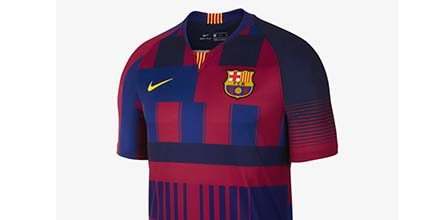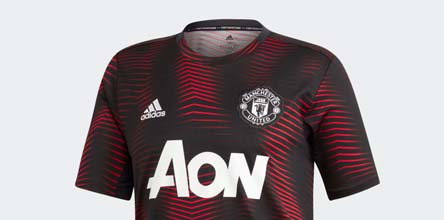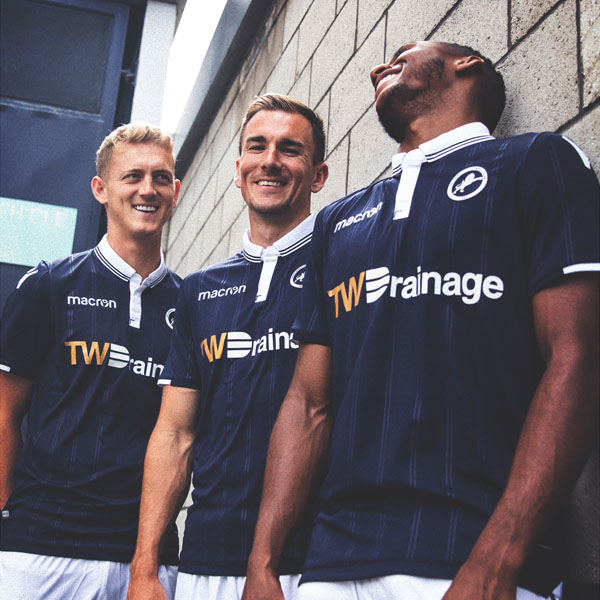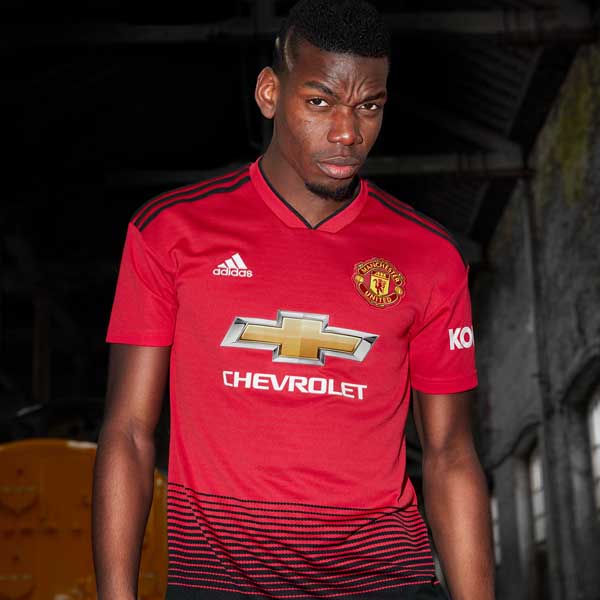As the countdown to 2019 ticks on we’re reflecting on what has been a transitional year for the football shirt. A World Cup year which saw brands begin to respect the individual nature of a team’s identity. For 2018 was the year of the football shirt – a year that has opened things up for 2019 to express with unlimited creativity.
Over the past 12 months brands have slowly left behind the minimal and simplistic trends that brought a clean but stale status to the replica game. Following on from a mini-era of restriction, 2018 brought fresh thinking and a creative licence which has seen the football shirt flourish in sporting, fashion and cultural environments, and that’s why we’re predicting 2019 to be a statement year.
Brands have been testing the water with subtle and experimental tactics in 2018 – one example of this being the pre-match jersey. Both adidas and Nike have delivered strong graphic patterns to the warm-up shirts of their leading clubs to gauge a taste for the more eccentric and fans have been left wanting to see more on competitive replica.

The England 2018 World Cup warm-up jersey was one of the most hyped and most sold pieces of replica in the summer with thousands of fans taking to social media to vent their thoughts on how it should have been the official home shirt. If Nike were fishing for feedback before committing to a new era of design then they received a very clear and very positive response.
Both Nike and adidas carried this concept onto their club pre-match jerseys with sales dramatically increasing as fans looked to bag something a little different to the ever-so-slightly tweaked new season home shirt. The thirst for a shake up is strong, and 2019 has a full licence to quench that. Designers shouldn’t be intimidated by change, they should embrace the fact that fans are open to this creativity.
The strongest sweetspot of 2018 was hit by a trend of modern-classic jerseys where brands delivered a modern take on iconic throwback jersey designs. The Nigeria home shirt which had 3 million pre-orders, and almost every adidas World Cup jersey being solid proof of that. Is the template being phased out? Are we about to take a turn towards the eccentric patterns and graphics of the 80s and 90s?

Third shirts have acted as a source of experimental design for the past few seasons and have successfully whetted the appetite for the new. Naturally, there’s more freedom with third shirts in terms of cutting ties to club tradition, and dropping them later in the season – a few months after the home and away launches – has allowed them to bathe in their own spotlight. The want for something alternative has increased tenfold in recent seasons; you only have to look at the PSG x Jordan success, EA Sports FIFA fourth shirts and even the Aston Villa x Luke 1977 which saw the presence of the lifestyle brand increase sales by 750% year on year. More proof that different sells.
Another influence for more creative freedom is the acceptance and embracing of the football jersey in alternative environments. The fact that the football shirt is being worn on stage, in music videos, in leading fashion shows is credit to designers and lays a foundation to build upon. Football jerseys are being used in more expressive places where creativity is encouraged and celebrated, such as music and street culture, and that has paved the way for more alternative designs.
The continued rise of the custom football shirt has also influenced the design process for brands. Fictional football clubs, special edition collaborations, streetwear brands designing their own jerseys, crossover interest into American sports – all of these factors and projects have made your standard home and away shirts look a bit, well, dull. They’ve set a standard and the performance side of things is challenged to keep up.
Wizkid‘s “Starboy” shirt with Nike took just minutes to sell out as another demonstration of football jerseys successfully living a double life in the music industry, while adidas linked up with Vancouver based design collective Frankie to create custom fashion pieces from leading 2018/19 adidas club kits.

PUMA are also making waves with their lifestyle approach to launching football kits by blending the worlds of streetwear and replica. You don't see many kit launches in a stadium setting any more and the AC Milan drops this year optimised that. PUMA will embark on a new era next season when they takeover the reigns at Manchester City, providing another opportunity to disrupt the past with a fresh take on kit design for one of world football's heavyweights.
Rumours have already begun to circulate that Nike are bringing back the classic Nike Sportswear logo, and it’ll be about striking that balance between throwback and future. Fans aren’t simply demanding remakes, they’re encouraging more bespoke, more thoughtful and more interesting kits. 2019 could be the year which cashes in on a movement of change. The foundations are set. Shock us. We’re ready.




















